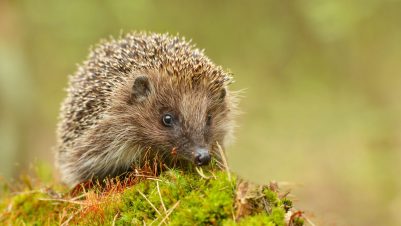THERE have been instances in the past when environmental contaminants have had unforeseen and detrimental effects on particular wildlife populations.
One of the best known examples was that of the widely used insecticide DDT which was subsequently found to persist in the food chain with serious consequences for the breeding performance of raptors such as the peregrine falcon.
The dramatic decline in peregrine numbers in the UK during the fifties and sixties was largely attributed to the thinning of the shells of their eggs (caused by exposure to DDT) which resulted in a high percentage of the eggs failing to hatch.
Recently a more modern disaster has unfolded: the catastrophic collapse of the populations of three Asian vulture species, namely the Oriental whitebacked vulture, the long-billed vulture and the slender-billed vulture. All three species are now classified as critically endangered, with the last of the three especially vulnerable.
The cause of this decline is rather too close to home for comfort: a drug that has been widely used in veterinary medicine in the region, diclofenac. Diclofenac is a non-steroidal antiinflammatory that has been safely used in human medicine for decades.
During the nineties, its use in south Asian livestock increased significantly and that was when the problem started. Vultures feeding on the carcases of treated animals that have failed to recover, succumb readily to the toxic effects of the drug. A population of slender-billed vultures that used to number millions has been reduced, in a matter of 15 years, to only about a thousand survivors.
Diclofenac was identified as the cause of the vultures’ demise some five or six years ago and its use in livestock was banned as long ago as 2006. However, as we are all aware, livestock owners are reluctant to “waste” drugs that they have spent hardearned money on, and its use is believed to continue. Replacing it with the safe alternative, meloxicam, costs significantly more, and diclofenac use will almost certainly cease only when there is none left in cupboards and drawers.
The loss of wild vultures in India has had knock-on and no doubt unimagined effects. These include the increase in feral dog populations, encouraged by the abundance of carcases previously scavenged by vultures. This has resulted in an increase in the prevalence of rabid dogs and the concurrent increased risk posed to humans, particularly children.
In addition, the Parsi community in Mumbai has traditionally laid out its dead at the Towers of Silence for them to be consumed by vultures, believing that the sacred elements of earth, fire and water should not be defiled by the dead. The reduction in the numbers of the city’s vultures has led to practical problems with this practice and the need to seek alternatives.
Some good news
Extinction of the slender-billed vulture in the wild in the next few years is a distinct possibility and so the recent report that two captive-bred birds are currently being reared in different parts of India has provided conservationists with some much-needed good news.
Clearly, preservation of those few birds that survive in the wild is of top priority but if that policy is seen to be failing in the next few years, then the capture of those birds that remain, with a subsequent captive breeding programme, seems like the vultures’ one and only last hope. Hence the excitement over the captive breeding success earlier this year.
The damage caused by diclofenac to vultures is a salutary reminder that despite the licensing and safety testing required for drugs, particularly new ones, it is unlikely that all eventualities and consequences can be considered before permitting their use.
After all, who would have thought that treating livestock with anti-inflammatories would have led to the decimation (and more) of three hitherto common species of birds. There are lessons here for all of us well into the future: complacency must not be allowed to prevail.






